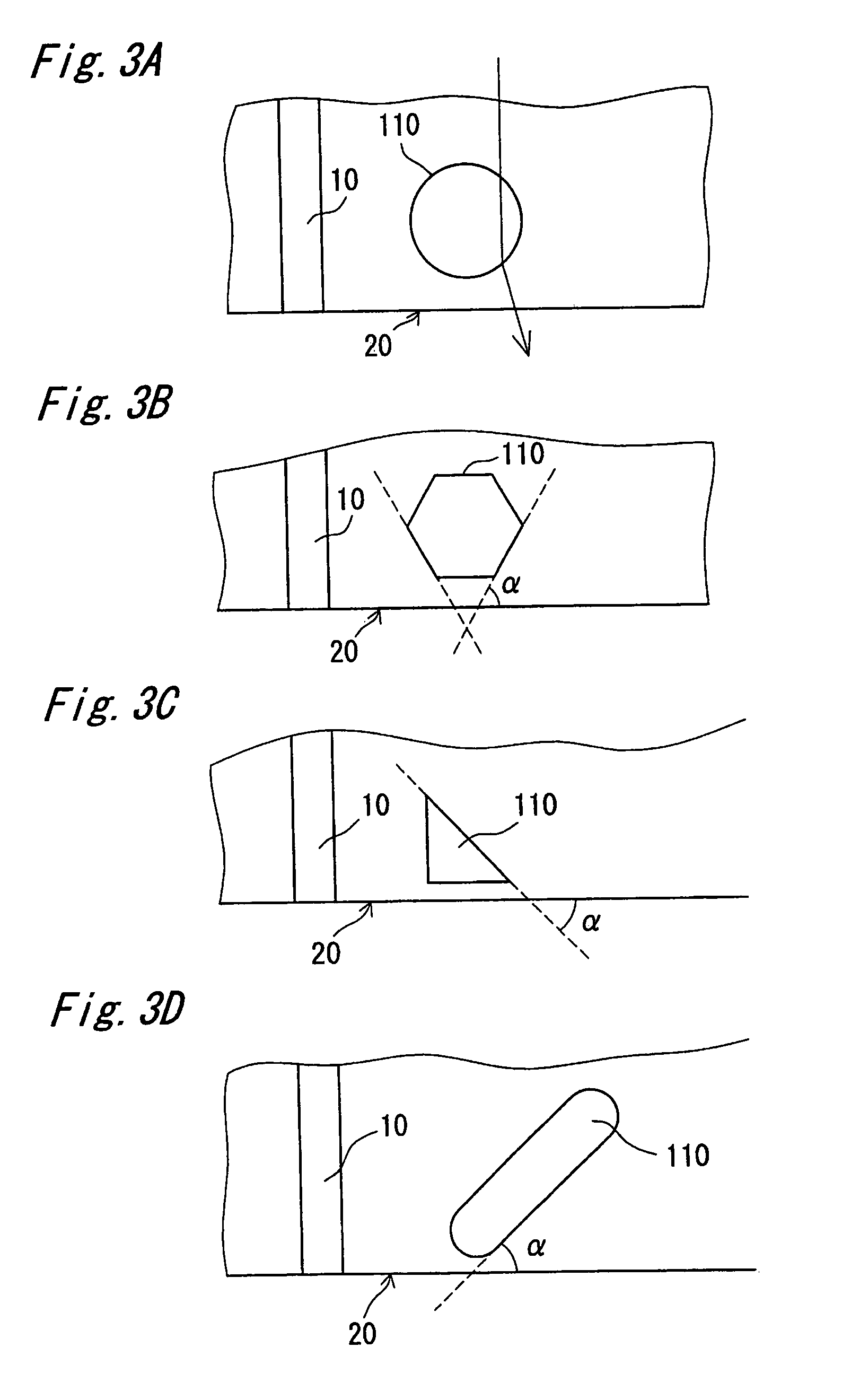Semiconductor laser device
a laser device and semiconductor technology, applied in semiconductor lasers, mechanical measuring arrangements, instruments, etc., can solve the problems of insufficient effect of semiconductor laser devices of the prior art to suppress ripples, ffp ripples, etc., to suppress ripples in the ffp of laser beams, less ripples, and less ripples.
- Summary
- Abstract
- Description
- Claims
- Application Information
AI Technical Summary
Benefits of technology
Problems solved by technology
Method used
Image
Examples
embodiment 1
[0071]FIG. 1 is a schematic perspective view of a semiconductor laser device according to a first embodiment of the present invention. The semiconductor laser device comprises a nitride semiconductor layer 200 of a first conductivity type, an active layer 205 and a semiconductor layer 210 of a second conductivity type stacked on a first principal surface of a semiconductor substrate 101 that has the first principal surface and the second principal plane. The substrate 101 has electrical conductivity, and has an opposing electrode structure where electrodes are formed on the second principal surface of the substrate 101 and on the semiconductor layer 210 having the second conductivity type. The opposing electrode structure enables it to draw a large current which results in a high power oscillation. The semiconductor layer 210 of the second conductivity type has a ridge 10 of a stripe shape formed thereon, thus resulting in a waveguide region of stripe shape formed below the ridge 10...
embodiment 2
[0144]This embodiment makes it easier to cleave a wafer when forming the resonance surface by dividing the wafer into bars. The semiconductor laser of the present invention is similar to the semiconductor laser of the first embodiment except for the points described below.
[0145]FIG. 8A is a perspective view of the semiconductor laser device of the second embodiment, and FIG. 8B is a partially enlarged perspective view of the recesses 110 shown in FIG. 8A. As shown in FIG. 8A and FIG. 8B, the semiconductor laser device of this embodiment has the arrangement of the recesses 110 so they overlap with the resonance surface 20, thereby having a notch formed in the resonance surface 20. This allows the recesses 110 that overlap the resonance surface 20 to function also as a cleavage assisting groove that assist to cleave the resonance surface 20, thus suppressing the occurrence of such a defect as deflection of the direction of cleaving.
[0146]In this embodiment, too, the recesses 110 can b...
embodiment 3
[0154]The semiconductor laser device of this embodiment has both the p electrode 230 and the n electrode 232 formed on the first principal surface of the substrate 101. That is, the semiconductor layer 200 of the first conductivity type, the active layer 205 and the semiconductor layer 210 of the second conductivity type having a conductivity type different from that of the semiconductor layer 200 of the first conductivity type are stacked on the first principal surface of the substrate 101. The semiconductor layer 210 of the second conductivity type, the active layer 205 and a part of the semiconductor layer 200 of the first conductivity type are etched, thereby exposing the semiconductor layer 200 of the first conductivity type. The n electrode 232 is formed on the semiconductor layer 200 of the first conductivity type that is exposed. This embodiment is similar to the first embodiment in other regards. With the construction of this embodiment, the substrate is not limited to elec...
PUM
 Login to View More
Login to View More Abstract
Description
Claims
Application Information
 Login to View More
Login to View More - R&D
- Intellectual Property
- Life Sciences
- Materials
- Tech Scout
- Unparalleled Data Quality
- Higher Quality Content
- 60% Fewer Hallucinations
Browse by: Latest US Patents, China's latest patents, Technical Efficacy Thesaurus, Application Domain, Technology Topic, Popular Technical Reports.
© 2025 PatSnap. All rights reserved.Legal|Privacy policy|Modern Slavery Act Transparency Statement|Sitemap|About US| Contact US: help@patsnap.com



